The 7 Best Peer Review Software for 2025
Paige Watson
Published on 22 July 2025Peer review remains the backbone of academic publishing and conference management. For universities, research institutions, and professional societies, it safeguards quality, fairness, and credibility in research. But managing submissions and reviews manually—or through outdated tools—causes bottlenecks, errors, and frustration for authors and organizers alike.
That’s why in 2025, choosing the right peer review software is more important than ever. At PeerSubmit, we’ve evaluated the leading platforms and compiled a list of the 7 best peer review systems for the year ahead.
Why Peer Review Software Matters in 2025
Academic conferences and research journals face:
- Rising submission volumes
- Shorter deadlines
- More complex reviewer assignments
- Higher expectations for fairness and transparency
A modern conference management system with built-in peer review features solves these challenges by centralizing submissions, automating reviewer matching, and ensuring data security. This isn’t just about saving time — it’s about protecting the reputation of your institution or event.
The 7 Best Peer Review Software Platforms
1. PeerSubmit.com
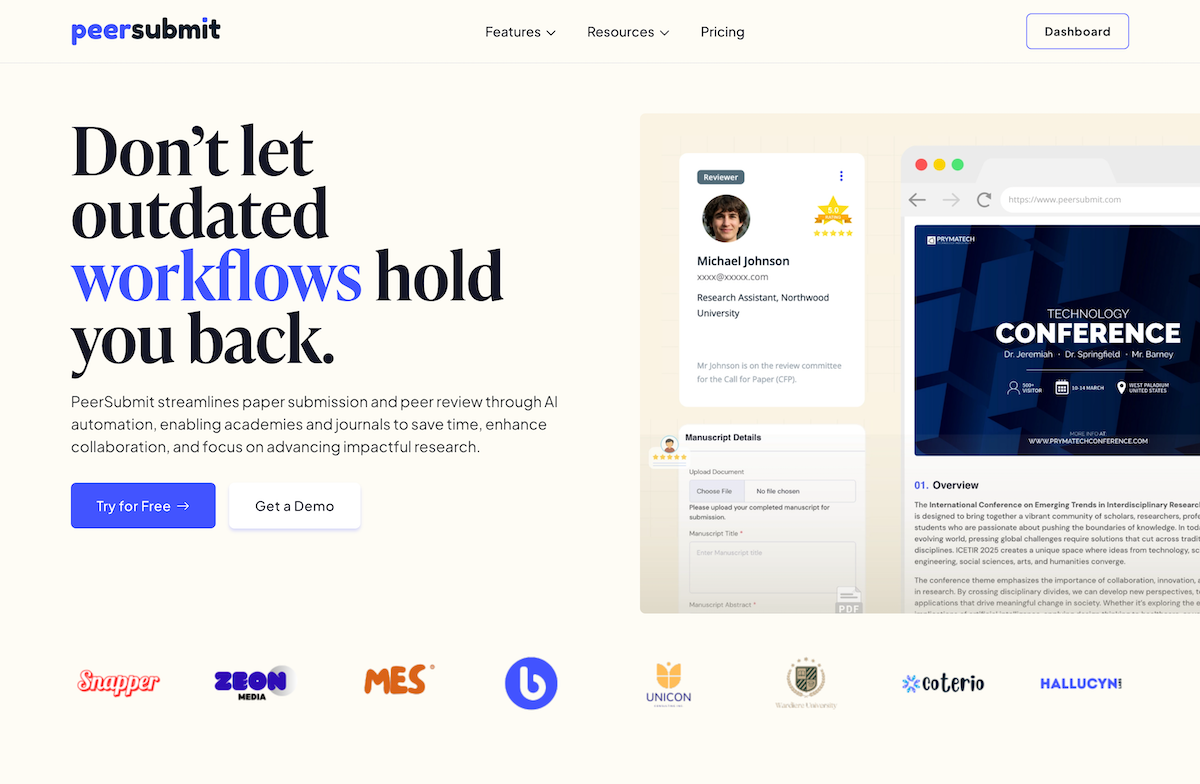
The top choice for universities and conference organizers who want an all-in-one platform.
- Strengths: Custom submission forms, automated reviewer assignment, real-time dashboards, role-based access, and integrated abstract management software.
- Why It Stands Out: Designed specifically for academic events, not just journals. PeerSubmit reduces admin workload, improves reviewer fairness, and helps committees deliver better academic programs.
2. ScholarOne
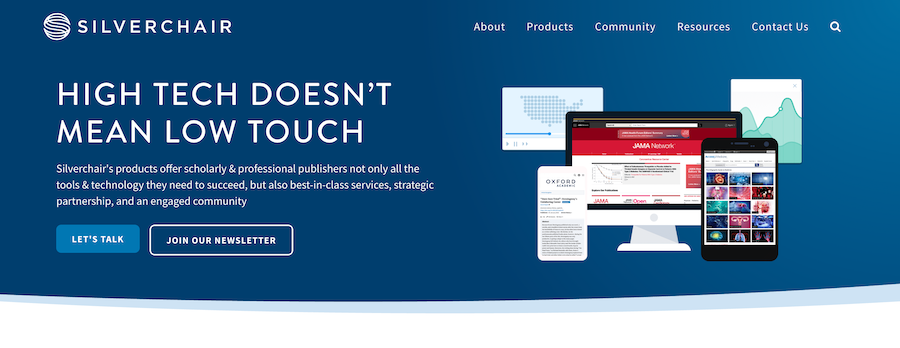
A publishing giant used by many journals.
- Strengths: Extensive publisher integrations, detailed workflows, compliance tracking.
- Limitations: Overly complex for smaller conferences.
- Best For: Large-scale publishers with established workflows.
3. Editorial Manager (Aries Systems)
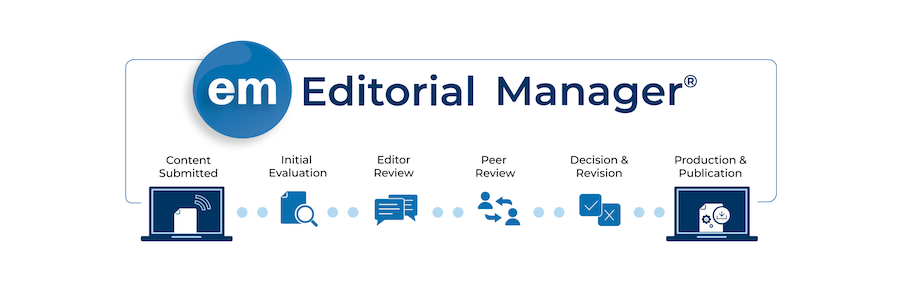
Another heavyweight in scholarly publishing.
- Strengths: Comprehensive features, trusted by top journals.
- Limitations: Less flexible for one-off events, steep learning curve.
- Best For: Continuous publishing rather than conferences.
4. EasyChair
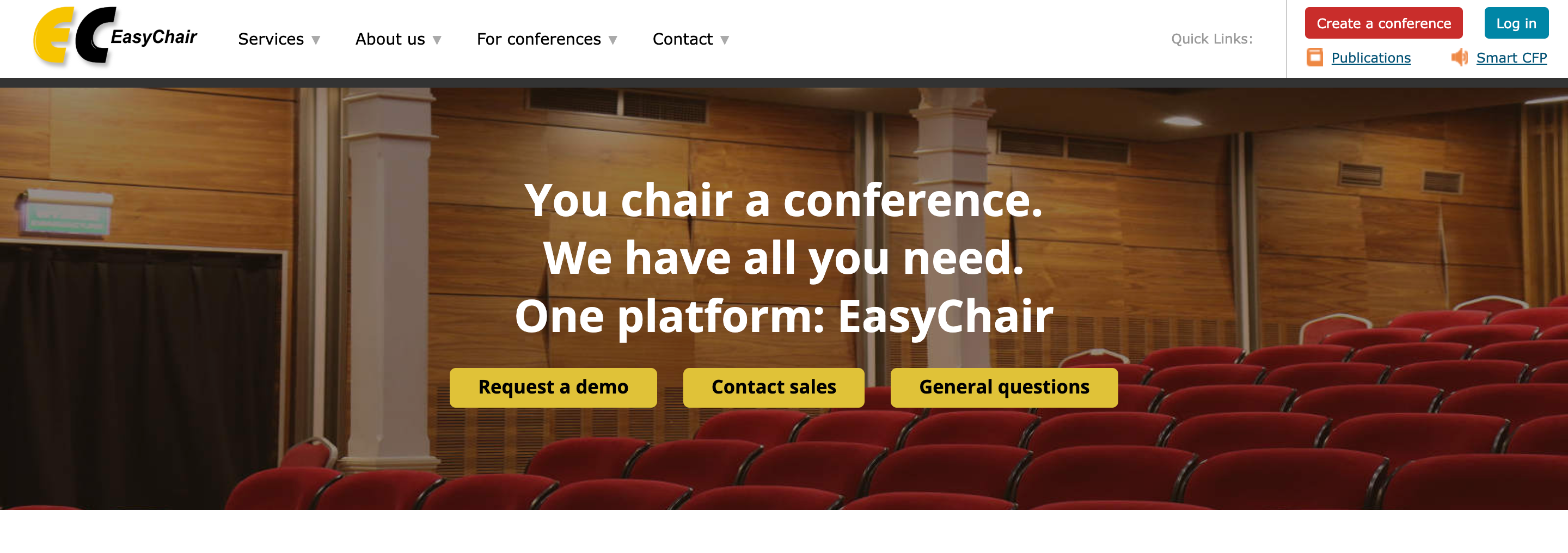
A community favorite in computer science.
- Strengths: Free basic version, widely recognized in STEM.
- Limitations: Dated user experience, limited customer support.
- Best For: Small, budget-conscious academic conferences.
5. Ex Ordo
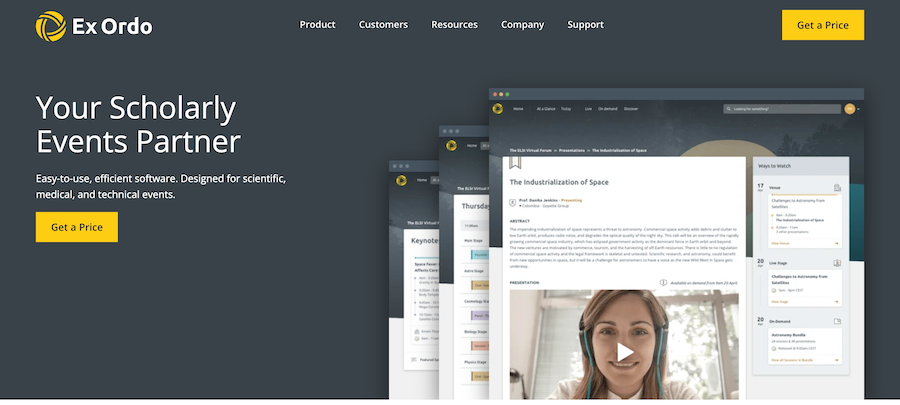
Well-known for clean design and user-friendliness.
- Strengths: Intuitive interface, strong analytics, good customer support.
- Limitations: Higher cost for smaller events.
- Best For: Medium-to-large academic conferences.
6. Morressier
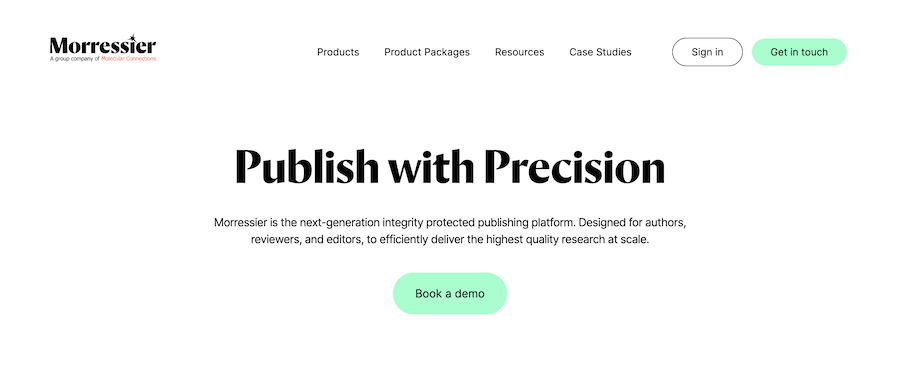
Blends peer review with virtual conference tools.
- Strengths: Strong hybrid/virtual event capabilities, integrated submissions.
- Limitations: Limited customization for advanced review workflows.
- Best For: Online-first or hybrid academic events.
7. Open Journal Systems (OJS)
A community-driven, open-source platform.
- Strengths: Free to use, customizable with plugins.
- Limitations: Requires technical expertise, lacks automation of modern SaaS platforms.
- Best For: Universities with IT resources looking for budget-friendly control.
Key Features to Look For
When choosing academic peer review software, prioritize:
- Centralized submissions – no more email chaos.
- Automated reviewer assignment – reduce bias and save time.
- Clear evaluation rubrics – ensure fairness.
- Real-time dashboards – track reviewer progress easily.
- Secure compliance – protect research data.
👉 PeerSubmit checks all these boxes, plus offers AI automation to further speed up reviews, summaries, and reviewer assignments.
Why PeerSubmit Leads in 2025
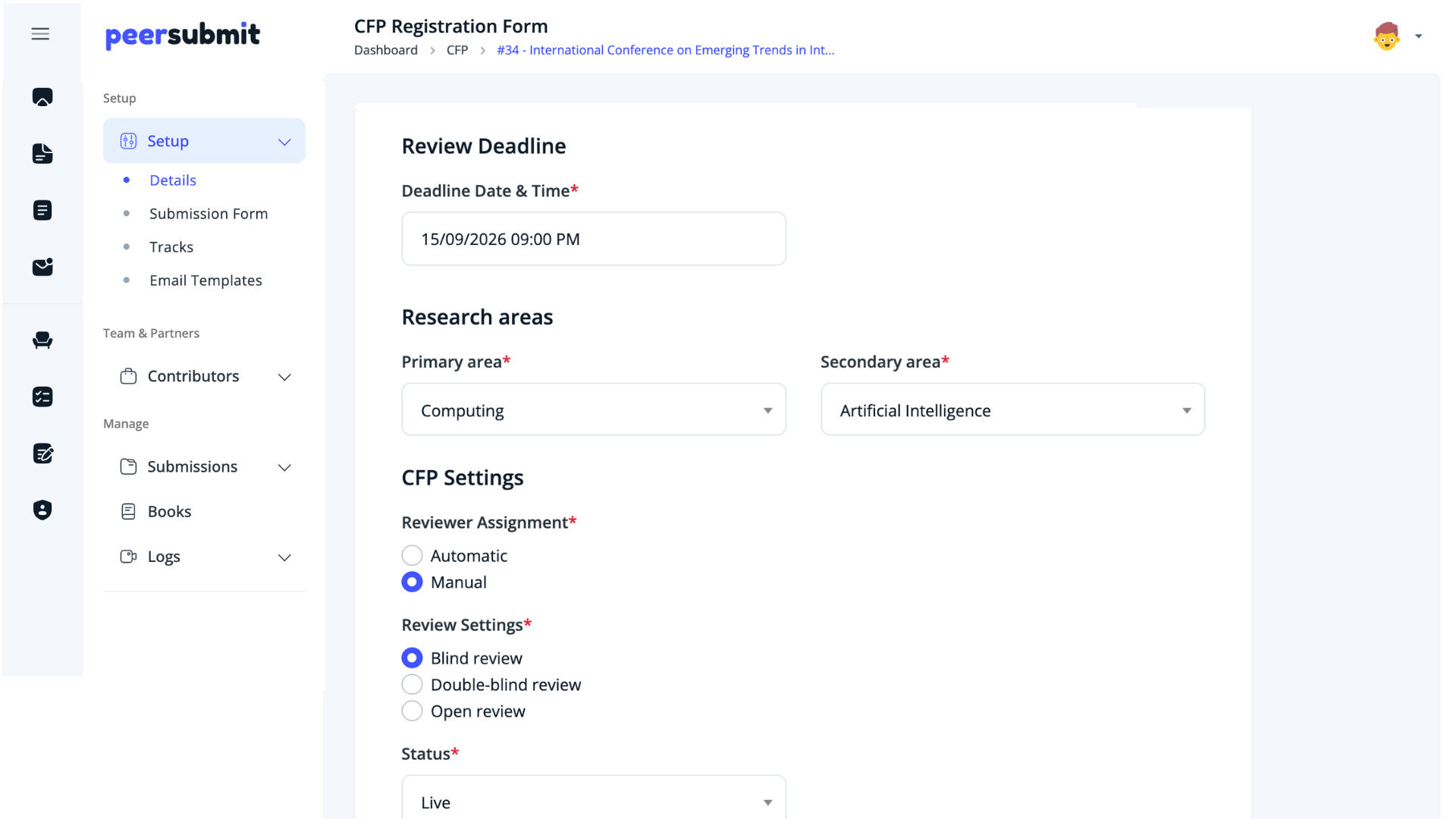
While other platforms are strong in specific niches, PeerSubmit.com is uniquely tailored for academic events:
- Optimized for conference organizers and universities, not just journals.
- Intuitive UI for authors, reviewers, and committees.
- Built-in team collaboration and access controls.
- Flexible pricing for institutions of all sizes.
- Secure data handling with transparent privacy policy.
With PeerSubmit, your team spends less time chasing reviewers and more time building meaningful academic connections.
Final Thoughts
The best peer review software doesn’t just manage submissions—it transforms the academic experience. ScholarOne, Editorial Manager, and OJS serve publishing needs. Ex Ordo and Morressier support modern event experiences. EasyChair remains a low-cost option.
But for universities and societies running research conferences and academic events, PeerSubmit delivers the best mix of automation, fairness, and scalability in 2025.
If you want to reduce stress, strengthen academic rigor, and run smoother events, PeerSubmit is the platform to watch this year.
Streamline Your Peer Review with PeerSubmit
- Free to use.
- No Credit Card Required
Stay Updated with PeerSubmit
Join our mailing list to receive expert insights, product updates, and academic event resources directly in your inbox.
✌️ No Spam — We Promise!